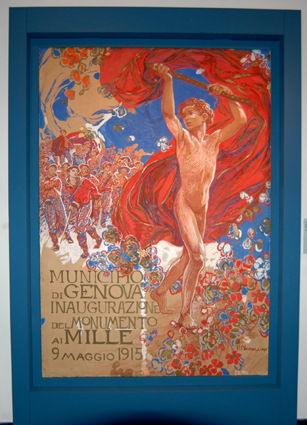Portable writing set comprising a rigid parallelepiped-shaped case containing scissors, inkwell, nib, ruler and letter opener. In a small exhibition area inside the apartment where the Mazzini family lived and where Giuseppe was born, now home to the Mazzini Institute - Museum of the Risorgimento in Genoa, the young man's study has been reconstructed, featuring some of the tools he used for writing, some of which are on display here. From the black leather-covered document holder, engraved with the name Joseph on the flap, to the portable box with pens and inkwell, the case with small round glasses, and the cipher for secret communication. In addition to the precious notebooks from his youth, written in his unmistakable tiny handwriting on thin tissue paper (the Zibaldoni), there is also a double metal seal engraved with the initial “M” on one side and Giuseppe's nickname, 'Pippo', as he was affectionately called by family and friends.
These are particularly significant relics because they reveal the enormous importance that writing and letters had in Mazzini's life, fundamental elements for his political and revolutionary activity. Through his frequent, tireless letters, he was able to guide the Italian Risorgimento movements from afar, keeping his teachings alive. These letters also show us the man behind the thinker and are invaluable in reconstructing the memory of a complex hero, capable of great emotional outbursts and marked by a profound humanity.




